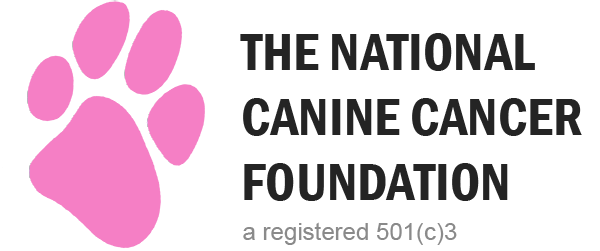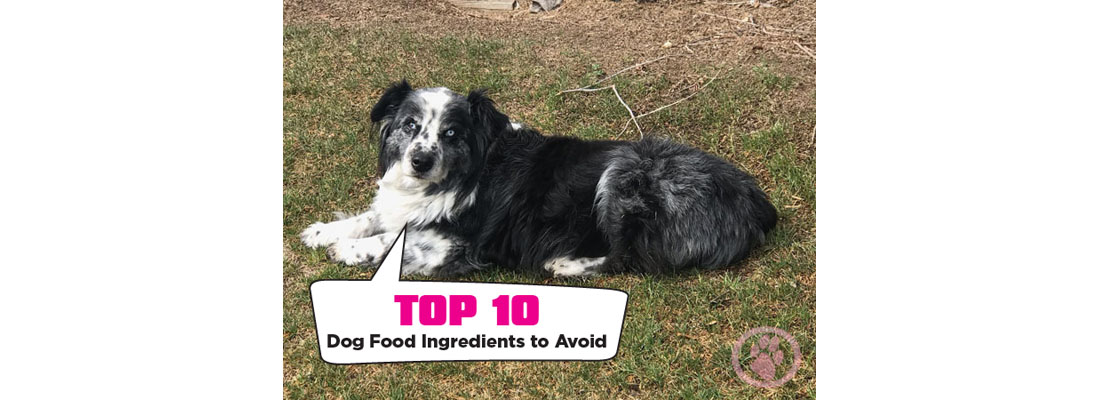Health-conscious people may be used to reading food labels closely but it’s a good idea for every pet parent to be doing the same thing when it comes to food. There are several dog food ingredients to avoid and numerous reasons for doing so. These ingredients send up red flags if we see them listed because they are potential toxins or not ideal to maintain your dog’s health.
 Dog food companies develop “palatants,” ingredient systems that are specially designed to make pet foods, treats, and supplements taste better. And while we all want our four-legged friends to have a tasty meal, we also want it to be healthy.
Dog food companies develop “palatants,” ingredient systems that are specially designed to make pet foods, treats, and supplements taste better. And while we all want our four-legged friends to have a tasty meal, we also want it to be healthy.
Unfortunately, certain brands of dog food may choose to use ingredients that may taste good but cost them less to source and help the food have a longer shelf-life. This approach to dog food and palatants typically doesn’t result in quality dog food. Our goal is to ensure you are a well-informed consumer when looking at dog food ingredients. Every dog owner should review dog food labels carefully, keeping an eye out for any of the dog food ingredients in our list, which you may want to avoid:
BHA & Ethoxyquin Preservatives
Top on the list of dog food ingredients to avoid are artificial preservatives. These chemicals extend the shelf-life of dog food allowing certain brands to reduce costs by reducing spoilage but may not be ideal for our favorite dogs.
Butylated-hydroxyanisole (BHA)
Butylated-hydroxyanisole (BHA) prevents fats and oils in dog foods from spoiling so the products stay fresh longer. The red flag here is that while The U.S. Food and Drug Administration (FDA) allows BHA to be present in dog foods, the U.S. Department of Health and Human Services National Toxicology Program have both linked BHA to cancer. This toxic preservative consistently produces tumors in laboratory animals.
There are concerns that long-term ingestion of artificial preservatives like BHA and also BHT and ethoxyquin will be harmful to our furry friends. BHA and BHT are actually banned in some countries.
Ethoxyquin
Similarly, ethoxyquin is a chemical preservative that doubles as a pesticide and has been banned from use in human foods because it has been linked to cancer. However, it’s commonly found in dog foods where it is used to preserve the fish meal that is incorporated into the food formula. What’s really worrying is the fact that manufacturers aren’t required to include ethoxyquin on their ingredient labels. Apparently, if the ingredient is added to the pet food before it arrives at the manufacturing facility then the manufacturer is not legally required to list it.
Don’t despair though. If the dog food you’re thinking of buying contains fish, look for written assurance on the label or manufacturer’s website stating it doesn’t contain ethoxyquin. If you cannot find this assurance, assume it contains ethoxyquin. Another option is to call the manufacturer and ask.
Artificial Preservatives Alternative
A better alternative is choosing dog foods and treats with natural preservatives, such as vitamin C (ascorbic acid), vitamin E (mixed tocopherols), and rosemary. These alternatives will not extend the shelf life of pet food products as long as artificial preservatives, but they are a healthier choice.
Meat “By-Products”
Meat or animal by-products are highly suspect because you can never be sure what’s included in this catch-all category. The other problem is that they are often cheaply sourced and therefore are likely to lack nutritional value. So, what exactly are animal by-products? They consist of the remnants of the animal carcass after all the meat and bones have been removed.
Not all animal by-products are problematic. Legally, they are required to be free of feathers, hooves, hair, hide, beaks, and any other non-edible parts of the animal. However, if the ingredient is artfully ambiguous about what the by-product is or how the meat meal is sourced, you probably want to stay away. Avoid unnamed animal by-products, which can be so heavily processed that they are void of nutrition.
Meat By-Products & Meat Meal Alternatives
The best animal by-products are named so you’ll know they are organ meats, such as heart, liver, or kidney. These are healthy ingredients you actually want to see in pet food. After all, your dog needs real meat.
Non-Descript Meat Meal
Any kind of protein “meal” is the product of a process called rendering, where the leftover bits and scraps of diseased and dead animals are cooked to remove the fat. Meat meal is what remains. The good news is that any pathogens are also removed in the process but so are nutrients. The issue, therefore, is that the nutritional quality is highly questionable. It all depends on the animal parts in the meal.
You may also see “meat and bone meal” on a pet food label. Either way, it’s a processed food composed of non-descript bits. Just like with you’re own diet, it’s a good idea to have some idea as to what is being eaten.
Non-Descript Meat Meal Alternatives
Real recognizable meats, or even meals of these meats, are a safer bet. These include whole deboned chicken, turkey, lamb, beef, or salmon, which have a higher likelihood of being less processed and more nutritious.
Corn
Corn is a whole grain, and it does contain protein, it’s true, but it is also known to be a potential allergen. Many dogs experience difficulty digesting corn because of the starch and fiber.
It is often added to pet food because it is a subsidized, cheap filler; however, its nutritional value is highly debatable. While it has a high protein concentration for a grain, it doesn’t contain all essential amino acids and is not as bioavailable as animal protein. The usual reason corn is added to dog food is to help raise the protein percentages, however, with the added digestive difficulties for dogs, this is a questionable trade-off at best.
Corn Alternatives
Better alternatives are named meats such as chicken, pork, beef or salmon and nutrient-dense vegetables and complex carbohydrates, such as sweet potato.
Corn Syrup
Corn syrup is problematic on many levels and is a very controversial dog food ingredient. It is an added sugar used to sweeten many dog foods, even though it isn’t needed. While taste is important, with the known downsides of regularly ingesting corn syrup and heavy sugar consumption, it’s hard to justify including it in your dog’s diet. Corn syrup can result in weight gain, diabetes, tooth decay, hyperactivity, and mental behavioral problems.
No Corn Syrup Alternatives
In general, dogs should not eat added sugar. Naturally occurring sugars in foods can be broken down with regular digestion, so if you’re concerned about your dog enjoying the taste of dog food, look elsewhere to enhance the flavor.
Soy Beans & Soy Bean Products
Soy is not only a cheap, nutrient-deficient filler but it’s also estrogenic and known to harm a dog’s endocrine system. It is also a common allergen that can create digestive problems for pets, causing gas and bloating.
Why is it included in pet food? Like corn, it is often used to increase the protein content in dog foods of poor quality. Admittedly, soy is one of the few plant protein sources that contain all essential amino acids. However, as we mentioned earlier, grain and vegetable-based protein sources are not as bioavailable to pets as meat protein is. Eggs and named meats or meat meals are easier for pets to digest and it is easier for dogs to convert them for energy and to improve immune response to muscle maintenance to metabolism.
Sodium Tripolyphosphate
Did you know that sodium tripolyphosphate is used to soften water and is the active ingredient in many detergents?
The U.S. Environmental Protection Agency (EPA) recognizes it as an insecticide, fungicide, and rodenticide. It is a skin irritant and can be harmful if inhaled, according to a fact sheet by the Food & Water Watch. The National Institute for Occupational Safety and Health (a division of the CDC), suspects it may be a neurotoxin. Would you believe it is still generally regarded as safe to eat?
Sodium tripolyphosphate is often added to pet food as a preservative. It might be hard to believe but it’s true!
Sodium Tripolyphosphate Alternative
Opt for dog food that uses natural preservatives instead, like rosemary extract. Warning: rosemary is not recommended for dogs that have any type of seizure disorder. If your dog has a health condition check with your vet to confirm whether rosemary might affect him.
Sodium Hexametaphosphate
Can you pronounce Sodium Hexametaphosphate? If an ingredient is hard to pronounce, that’s probably a clue that you should be wary of. This is an additive used in dental dog foods to reduce tartar build-up. Sounds beneficial, right? The problem is that it can have adverse effects when ingested and if your dog is an absolute chow-hound, chances are they’re eating too much of this.
Sodium Hexametaphosphate Alternatives
It’s better to brush your dog’s teeth and choose foods that don’t contain this worrisome ingredient. There’s nothing that should replace regular dental care for your pet anyway, so don’t buy dog food that can cause indigestion or long-term impacts on a dog’s health.
Propylene Glycol
Propylene glycol is a synthetic liquid substance that is added to some dog foods and treats to help maintain texture and keep them soft, lock in moisture in semi-moist foods and prevent bacterial growth. Here’s the shocker: it can also be used in antifreeze.
Even though it is considered a non-toxic alternative, the truth is that the FDA has banned propylene glycol from cat treats but the FDA says that this substance is Generally Recognized As Safe (GRAD) for canines. The problem is that it is still considered toxic to dogs at certain levels. Constant exposure to this preservative, which has been banned in some countries, is cause for concern.
At the end of the day, this is artificial additive moisture in semi-moist foods. Although it can be safely metabolized by your dog’s liver into safe compounds and manufacturers assure us that it is safe for use in food, propylene glycol may be toxic in large amounts.
Propylene Glycol Alternatives
It is best to avoid dog foods referred to as “semi-moist” as they are most likely to contain propylene. As an alternative buy canned foods or even dry foods instead to avoid this controversial ingredient.
MSG
Although it has zero nutritional value, MSG or Monosodium Glutamate is a popular flavor enhancer and like humans, many dogs are allergic to it. The most important consideration is that MSG can be used to improve the flavor of foods that consist of lower-quality ingredients but it can also be found in premium products. It may show up in many pet foods through what is called hydrolyzed protein. Nearly all palatants in pet foods with intense flavor profiles are created through a process of hydrolysis. Hydrolysis forms the MSG in the end process.
MSG Alternatives
This ingredient may be harder to avoid than others, so ideally, you’d want to make sure a food either has very small amounts of MSG or no MSG at all.
Artificial Colors & Flavors
Artificial colors and flavors have been linked to cancer, mental behavioral problems, and other serious health problems. Does your dog really need artificial colors to make food look more appealing? You should be aware that artificial colors can be in any and everything, including fruit, but it is most often found in processed foods.
Artificial Colors & Flavors Alternative
There are many naturally-derived colors that won’t make your pet hyperactive and fall victim to several biochemical processes within the body like food dyes will. Look for dog foods that don’t include coloring or flavor additives.
How To Shop For Dog Food To Keep Your Dog Healthy
We know you only want to give your beloved pup the good stuff. There are many high-quality, super-premium, minimally processed dog foods, packed with nutritional ingredients such as free-range chicken, organic vegetables, and whole fruits complete with antioxidants. However, if you think a higher price equates to higher quality, you might want to think again. Always read the ingredient list carefully. Unfortunately, “chicken” on a label can mean either scraps from a caged chicken or for all you know, the manufacturer is using free-range chicken. It’s hard to tell.
What to do? The simple advice is to avoid the top ten artificial additives or cheap, questionable ingredients that many manufacturers use to lower their costs and increase their profits.
Your fur kid’s nutrition is extremely important so when in doubt, err on the side of caution. Put the dubious dog food down and back away.
Related Links:
- 8 Super foods for Dogs
- Which breeds of dog are more prone to cancer
- 10 Early Warning Signs of Cancer
- Dog Cancer Prevention
Other Articles of Interest:




We are adopting a dog used to Purina One, skin & coat. It’s out of stock everywhere. What other brands/types could I consider. Shopping today!